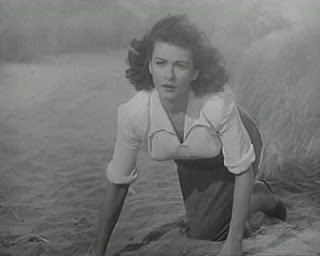 |
| Edna and Hitch |
While doing research for a blog on Shadow of a Doubt last year I unearthed information about Edna May Wonacott Green who portrayed Ann Newton, the younger sister in the 1943 film. I wrote a letter asking Edna if she'd be interested in being interviewed and a little while later received an email from her saying "yes." We had a lengthy telephone conversation soon after and on Edna's 78th birthday, February 6, 2010, the first part of our interview was posted at The Classic Film & TV Cafe as "Happy Birthday, Edna May." Part 2 posted a few days later (Part 1 link, Part 2 link). The blog also posted later at TCM's Classic Film Union fan site.
 |
| Edna Green today |
Edna Green is a truly genuine, intelligent and warm woman whose childhood was extraordinary. It occurred to me that the local paper where she now lives might be interested so I emailed the paper's features editor suggesting a piece about her. I included a link to my interview so he could get an idea of Edna's story. He was interested but said he liked what I'd written and asked for permission to reprint it. It was my turn to say "yes"...and in March of last year, Edna got the front page of the features section of a Sunday edition of the Yuma Sun (the interview was also posted with the online edition). But wait, there's more...
I submitted our interview to Classic Images - and it was accepted - for the journal's glossier sister publication, Films of the Golden Age and appears in the new issue - #63, Winter 2010 - 2011. It's an eight-page spread with many pictures from Edna's personal collection (a few are shown here), several taken on the set of Shadow of a Doubt. According to Wikipedia, TCM's "Robert Osborne has gone on record proclaiming Films of the Golden Age is one of his favorite publications."
Last weekend Edna and I, who have stayed in touch since our initial interview, talked about events in her life over the past year.
 |
| Edna with Martha O'Driscoll on Under Western Skies |
Once our interview appeared Edna began to hear from fans all over the U.S., Canada and...the world (Belgium, England, France, Germany, Greece, Slovakia, Spain and Sweden). The letters she receives usually include a photo of her printed from the Internet and a request that she sign it. Edna still averages about three letters a week and reports that most are interested in Shadow of a Doubt, but some even mention Under Western Skies, a 1945 film that co-starred Noah Beery and Martha O'Driscoll. One young American girl wrote asking for advice on how to get into the movies. Edna responds to all who write her and in the girl's case emphasized that it's been nearly 70 years since she was "discovered," and that Hollywood has changed dramatically since then...Edna is a little surprised (and pleased) that so many of those who contact her are young people.
After Edna's interview appeared in the Sun she began to receive invitations from local community groups to speak about her years as a child actress. So far she has led two such programs and has a third coming up soon. She brings her memorabilia and scrapbooks and talks about her experiences on Shadow of a Doubt, The Bells of St. Mary's and the other films on which she worked during the 1940s.
Edna's life has also opened up over this last year in an arena unrelated to her Hollywood heyday. When her husband died of cancer a few years ago, Edna became interested in diet and nutrition. She attended Food for Life classes offered by The Cancer Project and was soon part of a small group of women who regularly met to share ideas and recipes. Eventually Edna was leading a class of 30+ men and women who still meet once a week on Mondays. Edna is committed to a plant-based diet and claims she feels better than she has in decades. She is now leading two additional classes a week and her crusade to promote healthy eating was recently covered by the Yuma Sun. Click here for link. Following this latest newspaper coverage, Edna was contacted by a local judge in charge of a rehab center who is interested in incorporating healthy eating into his program and has asked for her assistance.
Edna's childhood could be called magical, but she left the movie business while still young and led a normal life in the intervening years. It seems somehow fitting that she has come full circle and is once again in the spotlight - not only because of interest in her onetime movie career, but also because of the work she is doing to help others in her community.
 |
| Films of the Golden Age Winter 2010/2011, click here to go to site |












































